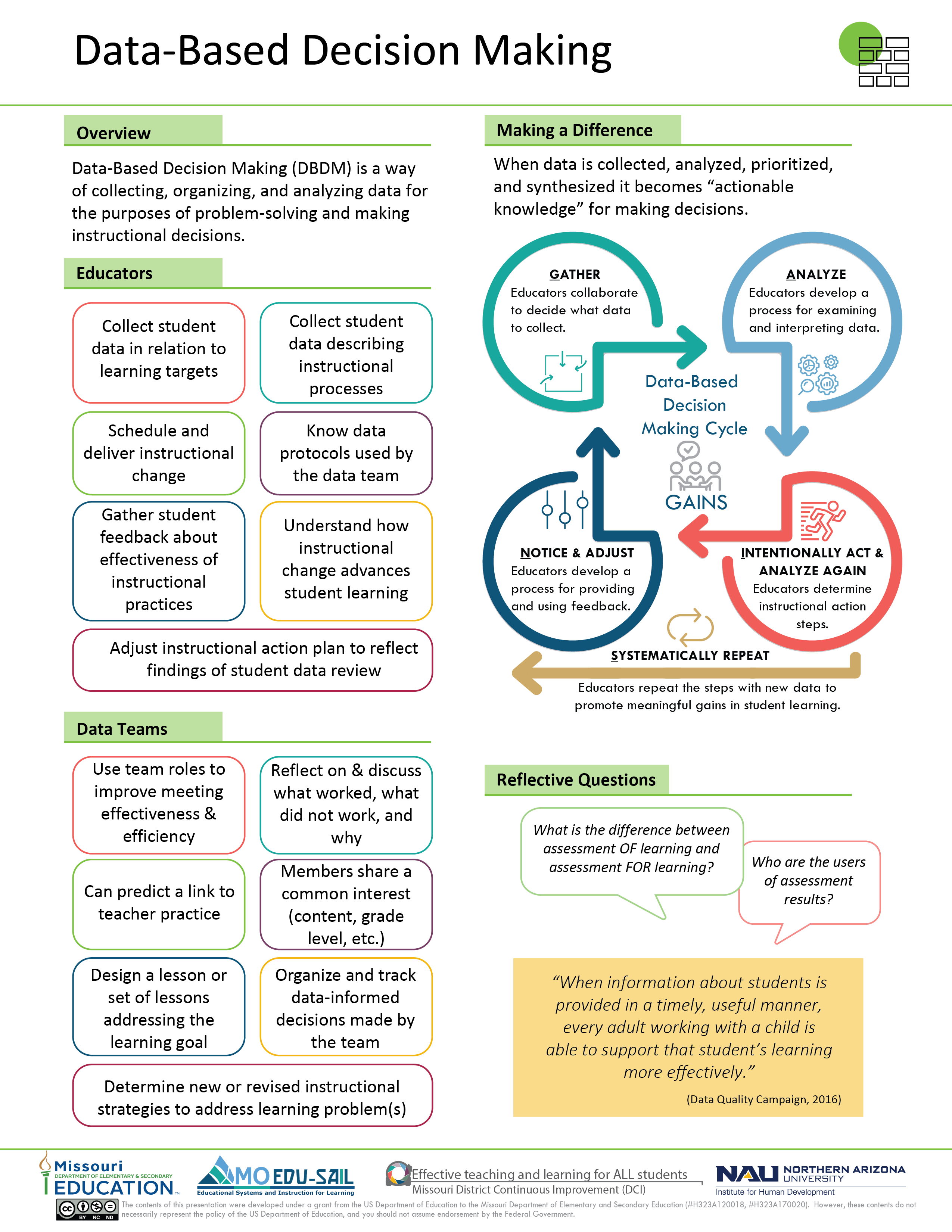Data-Based Decision Making (DBDM) is
- A process for making decisions based on data, as opposed to decisions based on intuition or only a few observations.
- An ongoing, outcomes driven approach.
- A way of collecting, organizing, and analyzing data for the purposes of problem-solving and making instructional decisions.
- A continuous approach to school improvement.
Data-Based Decision Making (DBDM) can involve (Marsh, Pane & Hamilton, 2006)
- Student information (input) data.
- Instructional (process) data.
- Student learning and social/behavioral (outcome) data.
- Family, parent, or student report (perceptual) data.
When data is collected, analyzed, prioritized, and synthesized, it becomes “actionable knowledge” for making decisions.
Course Outcomes
In this module, you will learn about Data-Based Decision Making (DBDM) as a systematic approach for driving instructional decisions. You will discover
- The importance of using a process for Data-Based Decision Making and the components of an effective process.
- The design and implementation of a Data-Based Decision Making Plan that will significantly improve student outcomes.
- How to overcome roadblocks to Data-Based Decision Making.
Preparation
- Gather a set of student data to use throughout this module.
- Read the article “Teachers Harness the Power of Assessment” by Herman, Wardrip, Hall and Chimino (2012) found at https://learningforward.org/docs/jsd-august-2012/herman334.pdf.
- Reflective Questions
- What does your current DBDM process look like? Reflect on the specific tools and process you use to plan and modify instruction when students do not “get it.”
- Why is collecting data about student thinking and understanding so important?
- What organizational supports help facilitate the effective use of data?
- What ideas do you already have about how to improve student outcomes through DBDM?
Course Content
Lessons
Status
QuizzesStatus



